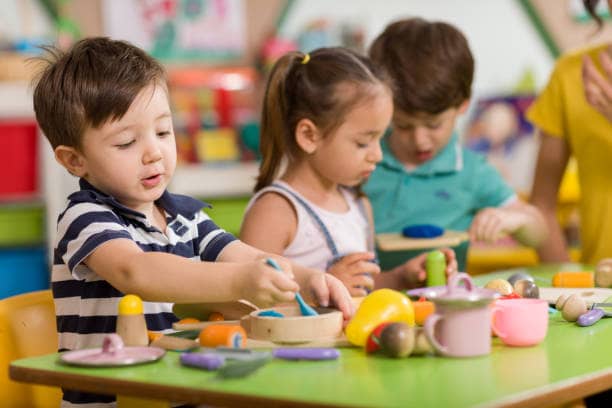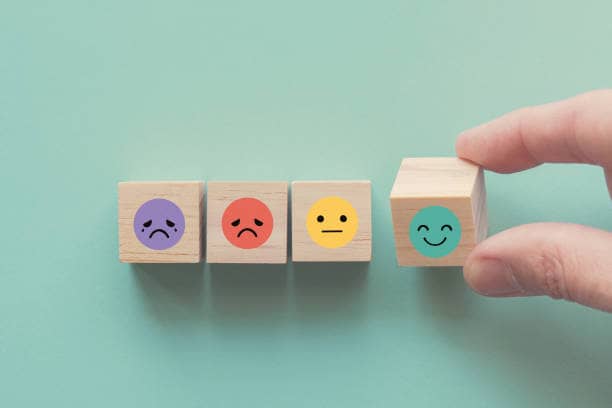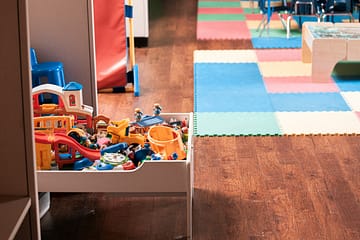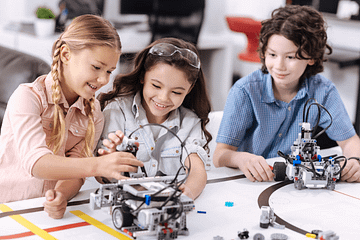Toys that captivate nurture a Child’s creativity which is essential.As a parent, you witness the joy of your child playing and creating, with laughter filling your home. Fear not, as this guide is here to assist you in finding captivating toys tailored to your child’s interests. We will delve into options that cater to visual, auditory, and kinaesthetic learners, encompass various neurodiverse profiles. For those embarking on parenthood for the first time, for busy working parents juggling responsibilities, or for seasoned parents with multiple children, this guide offers innovative toys to ignite your child’s curiosity. Let’s embark on a journey together to uncover toys that truly captivate young imaginations.

Advantages of Imaginative Play for Child Development
Engaging in imaginative play offers significant benefits for neurodiverse children, helping them enhance critical thinking and problem-solving skills. When immersed in make-believe scenarios, neurodiverse children navigate different storylines in their minds, considering character desires and plot development. This mental exercise boosts cognitive abilities that serve them well into adulthood. Fostering creativity, make-believe play encourages neurodiverse children to explore unconventional ideas and roles, sparking curiosity.
Such open-ended play aids in developing flexibility and adaptability in thinking. Research indicates that adults who engaged in imaginative play as children tend to exhibit higher levels of creativity. Developing language skills, engaging in play with peers involves constant communication. Whether describing scenarios, negotiating roles, or conversing in character, neurodiverse children expand their vocabulary and strengthen communication abilities. This interactive play contributes to their capacity to articulate themselves effectively and share engaging stories.
Through imaginative play, neurodiverse children navigate social dynamics and conflict in a safe setting. Learning to cooperate, share ideas, and comprehend diverse viewpoints, they acquire essential social skills. Assuming various roles allows them to process complex emotions and experiences, fostering empathy. Unstructured play opportunities promote social adeptness and enhance emotional self-regulation in neurodiverse children. Given the numerous benefits of imaginative play, encouraging neurodiverse children to engage in open-ended make-believe is a valuable investment. Introducing simple toys that stimulate storytelling and role-playing, setting aside time for unstructured play, and actively participating in the fun can nurture creativity and imagination in neurodiverse children, leading to lifelong rewards.
Toy Trends
Science, technology, engineering, and math (STEM) toys are revolutionizing children’s play experiences by instilling skills like problem-solving, critical thinking, and logic through innovative means. Offerings include robotics kits for building and programming robots, circuit kits for interactive gadgets, and construction sets with movable components. The best STEM toys promote open-ended play and adapt as children’s abilities evolve.
Specially designed for children on the autism spectrum or those with sensory processing challenges, sensory toys provide stimulation through touch, sight, and sound. Items such as kinetic sand, fidget toys, light-up gadgets, noise-making toys, and plush textures cater to multiple senses. These toys have a calming effect and aid in emotional regulation.
Toys that inspire imaginative role-playing, such as play food, dolls, action figures, makeup sets, and costumes, remain perpetual favourites. Pretend play supports cognitive, social-emotional, and language development, helping children interact with others, solve problems, and think abstractly. Toys that allow children to shape narratives independently are particularly beneficial.
Choosing toys that spark imaginative play, like blocks, dolls, play food, and costumes, encourages open-ended creativity. These toys lack fixed rules, prompting children to invent their games and stories. While it’s tempting to oversee play at all times, granting children space for independent play is crucial for their development. Independent play fosters confidence, allowing children to explore interests at their pace.
While independent play is vital, engaging in play with your child is invaluable. Participating in their imaginative play showcases interest, strengthens bonds, and cultivates memorable experiences. Joint play reinforces language, social-emotional, and cognitive skills, providing insights into your child’s development and preferences.
As a parent seeking toys to excite your child’s imagination and promote development, specific toy categories are recommended.
Arts and Crafts
Toys centred on creativity, such as painting supplies, markers, stickers, clay, and play-dough, unleash a child’s artistic potential. Engaging in arts and crafts enhances fine motor skills, self-expression, and taps into creative abilities. Flexible supplies with diverse applications captivate children’s attention effectively.
- Self-Expression and Emotional Regulation: Creative activities offer a safe outlet for neurodiverse children to express their thoughts and emotions. This self-expression can be particularly valuable for children who struggle with verbal communication, allowing them to convey feelings and experiences through art.
- Focus and Attention: Arts and crafts projects often require sustained attention and concentration. For neurodiverse children, engaging in these activities can help improve their ability to focus on tasks, promoting better attention spans.
Building Toys
Construction sets like Legos, Magna-Tiles, and blocks offer opportunities for imaginative construction and creative play. These toys enhance spatial awareness, hand-eye coordination, and logical reasoning. With age-appropriate sets, children can construct intricate structures, vehicles, and robots, extending the possibilities for imaginative play.
- Logical Reasoning and Problem-Solving: Construction sets require neurodiverse children to follow sequences, recognize patterns, and think logically. Solving the challenges of building stable and functional structures enhances their problem-solving abilities and critical thinking skills.
- Flexibility and Adaptability: Building toys encourages open-ended play, allowing neurodiverse children to experiment with different designs and approaches. This flexibility fosters adaptability and resilience, as children learn to adjust their plans and try new solutions when faced with obstacles.
Equipped with insights into captivating toys that spark your child’s imagination, you can unlock new realms of play. Cater to your child’s interests and needs when selecting toys, recognizing the profound impact these tools can have on their development. With a diverse array of options available, focus on toys aligned with your values and budget. Encourage your child’s inner creativity and allow their imagination to flourish by providing captivating toys and opportunities for self-directed play.



